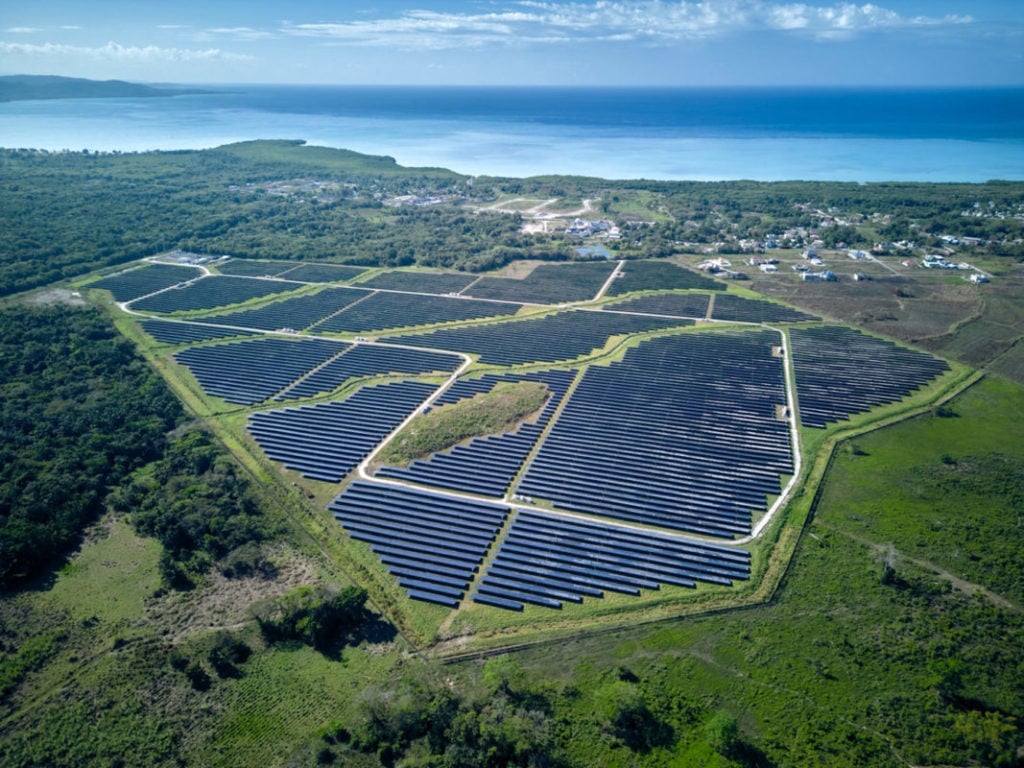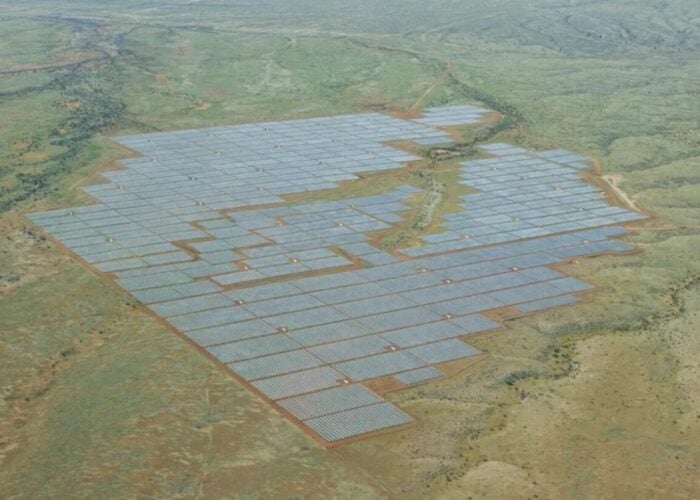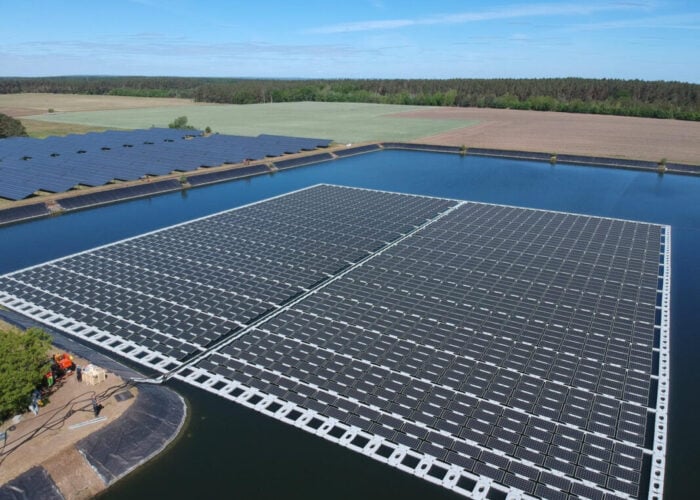
Governments across Central America are starting to issue renewable energy tenders with a focus on solar power, driven by the fact that PV technology has become more financially competitive with traditional forms of power.
A 2022 report from Wood Mackenzie, ‘Latin America levelized cost of electricity (LCOE)’, found that solar would be the most cost-competitive energy source in the region until 2050, with the LCOE as low as US$14/MWh across the region, significantly lower than other power sources, such as offshore wind, which is expected to reach US$57.3/MWh in Colombia by 2035.
Unlock unlimited access for 12 whole months of distinctive global analysis
Photovoltaics International is now included.
- Regular insight and analysis of the industry’s biggest developments
- In-depth interviews with the industry’s leading figures
- Unlimited digital access to the PV Tech Power journal catalogue
- Unlimited digital access to the Photovoltaics International journal catalogue
- Access to more than 1,000 technical papers
- Discounts on Solar Media’s portfolio of events, in-person and virtual
The falling costs of solar development has created novel opportunities for developers, including private power purchase agreements (PPAs), in several markets, including Panama, Guatemala, Jamaica, Colombia, El Salvador and the Dominican Republic.
PV Tech Premium spoke to Fernando Zúñiga, managing director for Latin America & Caribbean at MPC Energy Solutions (MPCES), an independent power producer that is developing projects in all of the countries listed, about opportunities and challenges across these markets.
Government-driven projects
In early January, Panama announced a long-awaited 500MW renewable energy-focused tender, having not held such a government-led tender since 2015. The day of the bid has not been officially released, but there are expectations that it will be held during the first quarter of this year. Alongside solar and wind, the tender also includes an energy storage component, but it is not yet clear if it is included as mandatory or as an option.
The Panama government has also announced more specific information on when firms winning PPAs will need to start operations, since they have different timelines.
Last year, Zúñiga outlined various fiscal incentives that Panama’s government had employed to support PV, including an exemption on import taxes. He describes the latest tender announcement since that time as a “very positive” step forward, and the support of national governments could be key in a number of Central American markets.
Jamaica has also announced a 100MW tender for solar, wind or storage last year, with a maximum capacity for each project being 50MW.
Bid submissions were due at the beginning of this month but the government has announced a delay until 1 April. While the sizes of these projects are much smaller than in Panama, there was considerable interest in this tender with around 30 companies expressing interest as potential bidders last year, adds Zúñiga.
An even mix of solar and wind capacity could be expected to win out in Panama’s larger tender, although there are no set quotas for each technology, says Zúñiga. Panama has very good wind resources for big projects, but this wind technology is normally more expensive per megawatt, so solar might be competitive with downscaled project sizes as compared to wind.
At a recent conference, the ‘Latin America Energy Transition Investment Forum’, held by the International Renewable Energy Agency (IRENA) in November 2023, the director of electricity of Panama, Dr Guadalupe Gonzalez, said new forms of financing were required to develop new technologies in the region and for the acceleration of the energy transition. In Panama, there were plans to create a National Fund for the Energy Transition, but there were concerns about its fiscal impacts on the national economy as a whole.
Private agreements driving change
Conversely, El Salvador is relying on its private sector to drive investment into solar projects. El Salvador has no government tenders at present and private PPAs are tied to where the demand is, but the country has changed positively in many senses and electricity demand is expected to grow in both the near and long term, says Zúñiga.
For this reason, MPCES has maintained a presence in the country and is actively developing projects, having already brought two plants in El Salvador to operation, as well as a third project led by its sister company MPC Caribbean Clean Energy Fund (MPC CCEF).
“El Salvador is growing so we are hopeful that there will be more energy needs in the near term,” Zúñiga adds. “We are developing greenfield projects to be ready either for a tender or to participate through private PPA processes.”
Guatemala, meanwhile, has made promising movements to supporting PV projects, moving from a solar sector driven by private interest to one with nascent government support. In 2023, the Guatemalan government announced its first renewable energy tenders since 2013, with another batch of tenders are expected in 2024, followed by another in 2025. For this reason, MPCES is “very excited” about this market.
During the impasse, MPCES identified and negotiated a private PPA with a subsidiary of Ingenio Magdalena S.A (IMSA), one of the largest sugarcane companies in the region, and it is expecting to start construction on this 65MW solar project this quarter.
Public and private support
Guatemala’s embrace of both government tenders and private investment could help create a market similar to that which is present in Colombia, where the sector is well-established, with a lot of players in the market, greater numbers of new projects starting operation each year and “a huge number” of projects under development, Zúñiga says.
There are several mechanisms to sell electricity whether through auctions, private PPAs or on the spot market, making it a very advanced and active market. MPCES itself already has two operational solar plants in Colombia with the power being sold through PPAs.
The Dominican Republic’s market, meanwhile, has become well-established, with tender announcements expected soon and opportunities to sign more PPAs. While there is a growing demand for energy in the country, the main challenge is in grid capacity. Large amounts of investment are needed to upgrade the grid infrastructure or maintenance of the substation and interconnection lines.
“Energy generation is not an issue,” says Zúñiga. “It’s more about an upgrade on the system so that there can be more injection capacity for renewable energy projects.”
Looking ahead, the solar sector looks bright for both countries. At the IRENA conference last November, vice minister of energy of the Dominican Republic, Rafael Orlando Gómez Del Giudice, said that in developing countries, the time and capital needed for investment in renewable energy projects contribute to higher risk perception.
Thus, so far, the country’s clean energy has been primarily driven by private investment in implementing PPA contracts, but a number of fiscal and economic incentives have also been established by the Dominican Republic government in order to motivate financial agents to participate in and invest in renewable energy projects.
Similarly, Colombia has published a roadmap for its energy transition and is consolidating a portfolio of green projects, which includes 6GW of renewable energy projects, including offshore wind and green hydrogen plans, as the government looks to accelerate the country’s energy transition.
Mitigating security risks
The question of security raised by Gómez Del Giudice was prominent for MPCES when it entered the El Salvador market five years ago. To counter perceived security issues across the region, MPCES’s strategy has been to focus heavily on the off-taker by scrutinising their bankability, track-record and international standing.
“The off-taker is one of the most important factors that we take into consideration. We always approach local stakeholders, such as banks, advisors, investors, as part of our due diligence process,” says Zúñiga. “At the end of the day, the off-takers are the ones buying the electricity and we want to make sure we have strong company guarantees in case there’s a default.”
In its El Salvador projects, for example, MPCES works with established US energy firm AES, which also acts as an energy distributor, in a partnership that provides confidence and can garner banking support. Alongside off-taker bankability, MPCES assesses the technical risks of the site location, as well as the political risks in each country.
Rather than any specific regional catalyst spurring on the solar sectors across Central America, it has been the drop in solar and wind technology prices that has made projects become more competitive without much need of further incentives, such as feed-in-tariffs.
Ultimately, Zúñiga claims that it’s fair to say that renewables are now competing directly against fossil fuels, on their own financial merits, with minimal additional fiscal incentives necessary in the region.







